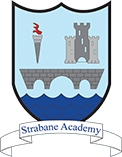In Technology and Design our aim is to encourage students to:
- use imagination and develop skills of creativity and critical analysis;
- communicate design ideas and decisions;
- use a broad range of materials, components and technologies to develop and produce high quality, imaginative and functional prototypes;
- consider aesthetic, technical, economic, environmental, ethical and social dimensions when engaged in design and making;
- consider the costs in the making and marketing of products;
- apply health and safety procedures;
- analyse and develop existing products;
- develop decision-making skills;
- apply appropriate technology and design terminology;
- understand that designing and making reflect and influence cultures and societies, and that products have an impact on lifestyle; and
- combine skills with knowledge and understanding to make quality products.
Course Content
Students have to complete three units to gain a GCSE in Technology and Design.
There are two external papers, each lasting 1 hour 30 minutes, and one controlled assessment.
Of the three units:
- Unit 1 covers core content that all students have to complete, (25%)
- Unit 2 has three options, allowing students to focus on electronic and microelectronic control systems, mechanical and pneumatic control systems, or product design, (25%)
- Unit 3 is the controlled assessment, which includes a design portfolio and an associated manufacturing task, (50%)
GCSE ENGINEERING AND MANUFACTURING
- It allows students to develop transferable skills that will benefit them in vocational training and employment.
- It makes students aware of engineering and manufacturing industries.
- It has broad cross-curricular links.
- It has only three units of assessment.
- It provides students with a broad background to, and core knowledge of, the engineering and manufacturing industries.
- It encourages students to develop design, computer aided design (CAD) and technical skills, and knowledge and understanding of the engineering and manufacturing industries.
- It allows students to develop as effective and independent learners.
Course Content
Students have to complete three units to gain a GCSE in Engineering and Manufacturing.
There are two external examinations: one written examination lasting 2 hours and one practical examination lasting 3 hours. There is one controlled assessment.
Of the three units:
- Unit 1 is the controlled assessment, which asks students to complete a design portfolio (25%).
- Unit 2 is the externally assessed practical examination; students must manufacture the product from the technical drawings supplied in 3 hours (25%).
- Unit 3 is the written exam; containing 11 questions, this examination includes pre-release material (50%).
GCE Technology and Design
In GCE Technology and Design students will study technology and design in a range of contexts including home, school and industry. They will learn about the creation of products and/or systems. They will investigate and analyse existing products, and design, manufacture and evaluate their own products. Students will study either electronic and microelectronic control systems or mechanical and pneumatic control systems, or product design.
Course Content
In the AS units, students study a common core of design and materials and a specialised study of systems and control (either electronic and microelectronic systems, or mechanical and pneumatic systems) or product design (20% of A level). Students also complete a product development task that is internally assessed (20% of A level).
Students who continue to A2 will explore systems and control, (either electronic and microelectronic systems, or mechanical and pneumatic systems) or product design in greater detail than at AS level (30% of A level). The A2 course includes a design and make task that is internally assessed (30% of A level)
The range of career options open to you is very wide due to the nature of GCE Technology and Design as it involves problem-solving, application of scientific principles to the design of products, the process of design itself and the use of materials and techniques such as computer-aided design. This can provide you with a useful basis for entry into careers such as product design, engineering, graphic design, teaching and architecture.



